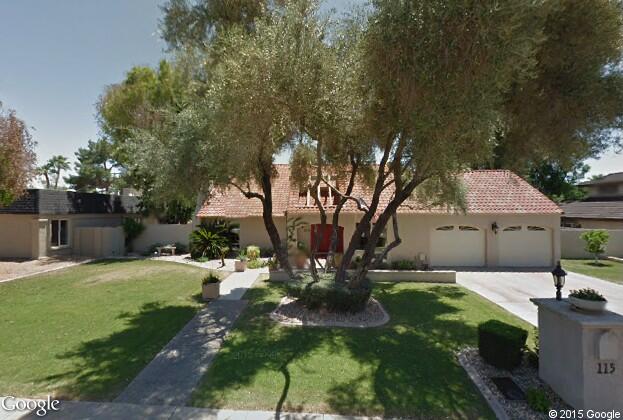Moving to Phoenix
Mike wasn't doing much computer programming work, but he was learning more and more about the company and its needs.
When FEEC decided to give up on IBM and committed to GE (eventually purchasing two GE400 computer systems), Mike was tasked to select the programming languages and other software the company would use,
This meant frequent trips to Phoenix, to meet with marketing and technical people and develop conversion plans for the new computer systems.
Mike also became FEEC's official technical interface with GE, often dealing with high-level technical people, as well as marketing people.
He developed many good relationships with the people who lived and worked in Phoenix.
(To this day, he isn't sure how or why this happened to him...)
When in Phoenix, Mike was always treated well by his hosts (he was "the customer"), usually taken to nice restaurants and put in high-end hotels and resorts.
Mike became involved with the GE Users Association, a growing international group of GE computer customers that usually held their Annual Meeting in Phoenix.
As his knowledge and reputation grew, Mike was elected to he group's Executive Board, eventually becoming its president.
He was able to bring Libby to Phoenix for some of these meetings, and they stayed in some of the finest resorts there.
They were also entertained by GE's marketing executives and learned a lot about life in Phoenix as a result.
Mike fell in love with Phoenix: its weather, restaurants, people and the lifestyle.
Phoenix was a very easy town to navigate, with wide, straight streets and new construction everywhere.
Many trips to Phoenix were in the winter, and returning to Chicago made Phoenix even more appealing.
He dreamed of moving to Phoenix, and he approached Libby with the idea.
Such a change was daunting: Mike was doing well at FEEC, and Libby loved their neighborhood and friends.
Libby had been to Phoenix a few times with Mike on business, but leaving seemed risky for the family.
Mike was in management at FEEC, but he missed being a programmer.
He was hoping for a future where he could pursue his interests, and working with leaders of the industry was compelling.
The decision for Libby came down to one thing: that Mike would stop travelling.
In 1970, Mike approached people he knew at GE to see if GE would hire him.
GE was in a difficult position, because they didn't want to jeopardize a big customer by being seen as "raiding".
Worse yet, GE's large scale computer business was being sold - to Honeywell, Inc.
This sale caused a hiring freeze at the Phoenix facility, as well as lay-offs.
It wasn't a good time to be seeking a job with this company!
Mike continued his quest to work in Phoenix, and he was travelling there 6-8 times a year in support of the IT growth at FEEC.
In fact, FEEC outgrew the GE 435 computers and started looking at even bigger and more powerful equipment.
GE/Honeywell could provide expansion for FEEC, and Mike was working on that almost full-time.
Finally, after 3 years of personal uncertainty, GE/Honeywell offered Mike a job, and the task of selling the Evanston house and moving began.
|
Fortunately, the house sold quickly, and Mike started working at Honeywell in the spring of 1973.
The sale/merger of GE and Honeywell was complete, and the Honeywell computer business was doing well.
Mike's new position was working on a large database information system for the US Military, called the WorldWide Military Command & Control System (WWMCCS).
This was an enormous system, and Honeywell had to "ramp up" its software development to build it.
Mike and his new co-workers were designing a very specialized and secret system, and they were given Top Secret security clearances to work on it.
It was very hush-hush stuff...
The WWMCCS team didn't work at the main plant, both for security and space requirement reasons.
They were located in an old factory and had their own large scale computers that were allocated just for this project.
It was isolated and not glamorous, but had the benefit of seldom seeing any Honeywell executives around.
They could work uninterrupted, which was an advantage.
Mike happened to be assigned to work with a true computer "genius", named Reuben Muns, and they became good friends.
|
 First Phoenix House
First Phoenix House
|
The project was to design and implement a new conceptional set of programs that would allow non-programmers to specify requirements in their own "jargon", instead of using the formal computer languages of the day (COBOL, ForTran, BASIC, etc.).
This was establishing a new "state-of-the-art" for computer usage, and allows the US Military to keep their problem-solving within the various agencies, instead of developing and maintaining staffs of "programmers".
Important aspects of this system were rapid development and ease of maintenance of the ever-changing needs of those government agencies.
It was a reason the WWMCCS team was isolated from the rest of the Honeywell employees. [more]
 First Phoenix House
First Phoenix House